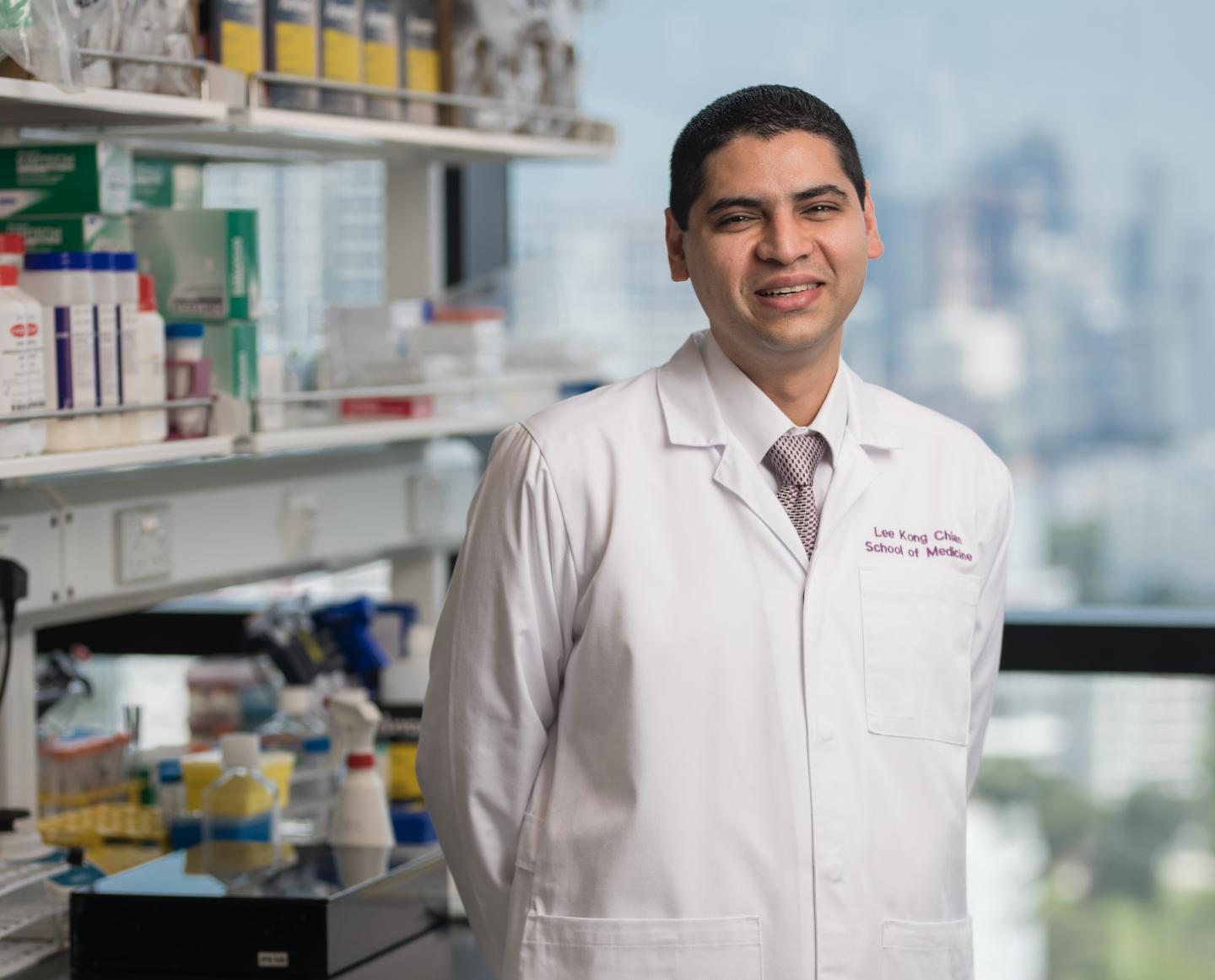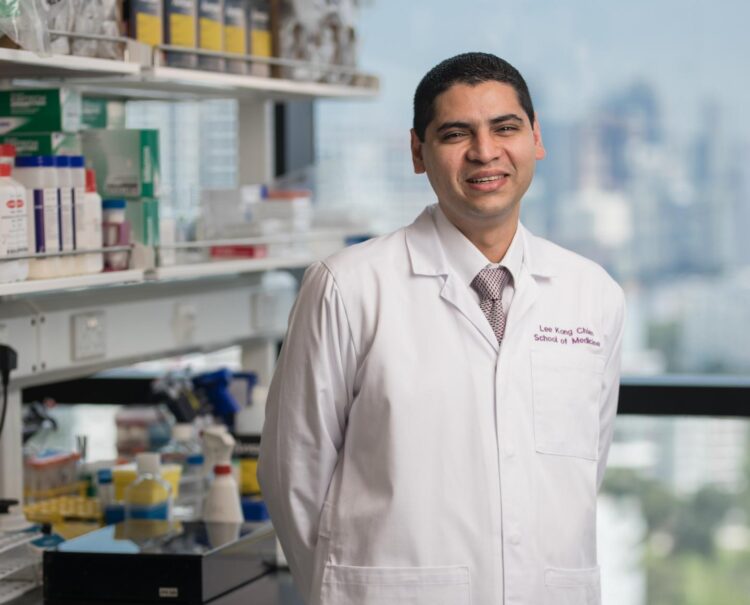
Credit: NTU Singapore
Traditionally, an infection is thought to happen when microbes – bacteria, fungi, or viruses – enter and multiply in the body, and its severity is associated with how prevalent the microbes are in the body.
Now, an international research team led by Nanyang Technological University, Singapore (NTU Singapore) has proposed a new way of understanding infections. Their study of close to 400 respiratory samples from patients with bronchiectasis, a chronic lung condition, has shown that microbes in the body exist as a network, and that an infection’s severity could be a result of interactions between these microbes.
Through statistical modelling of data from these respiratory samples, the scientists found that flare-ups of coughs and breathlessness (known as exacerbations) occurred more often when there were ‘negative interactions’ between communities of bacteria, viruses and fungi in the airways. A negative interaction occurs when the microbes compete rather than cooperate with one another.
These findings, published in one of the world’s leading scientific journals Nature Medicine in April, bring the scientists one step closer to developing a new way of tackling infections, by targeting microbial interactions rather than the specific microbes.
Assistant Professor Sanjay Haresh Chotirmall from the NTU Lee Kong Chian School of Medicine, who led the study, said: “Our current understanding of infections is that they occur when harmful microbes enter our bodies. This model of understanding, however, fails to account for resident microbes or explain why some patients with infection respond to antibiotics to which the microbe is resistant in laboratory testing. We are therefore proposing that microbes exist as networks, where interactions happen and that the resistant antibiotic in this case targets another microbe with which the culprit is interacting. We therefore can potentially improve clinical outcomes by breaking such crosstalk.
“The findings of our study are the first steps in providing a more holistic view of how infections occur. While our study looked at patients with bronchiectasis, we believe this concept applies to all forms of infection – whether skin, lung, or a gastrointestinal infection. This way of looking at infections potentially changes our understanding of infection and may offer fresh ways of treating them.”
Associate Professor John Abisheganaden, co-author of the study and Head of Department of Respiratory & Critical Care Medicine at Tan Tock Seng Hospital, said: “By applying an integrated and holistic method, this study provides a new and fresh approach to our understanding of respiratory infection. Applying this precision-medicine approach can help the managing physician better understand and choose the most appropriate antibiotic or other therapy to confer clinical benefit – in short, to guide us to the right treatment at the right time, and for the best outcome.”
Microbial interactions and infection
For their study, the scientists looked at patients with bronchiectasis, a disease of high Asian prevalence, where airways dilate irreversibly and, where infection promotes progression. Targeting bacteria with antibiotics reduces bacterial load and accompanying inflammation, which in turn alleviates symptoms and improves clinical outcomes.
To investigate interactions between microbes in the airways of patients with bronchiectasis, the team collected respiratory (sputum) samples from 383 patients from Singapore, Malaysia, Italy, and Scotland, including samples before, during and after bronchiectasis flare-ups.
After analysing the genetic material from bacteria, fungi and viruses in the samples, the scientists assessed for possible microbial interactions and found that patients with frequent flare-ups had more negative interactions, where microbes compete rather than cooperate, and that the number of such negative interactions increased even further during a flare-up. While changes to interactions between microbes during flare-ups was detected, there was surprisingly minimal change to the type and quantity of microbes present during a flare-up, and even after antibiotics were administered.
New treatment possibilities
The scientists believe that these findings suggest that microbial interactions potentially drive frequent flare-ups in patients.
Using these findings, the scientists have developed an online tool
to help other researchers and physicians analyse microbial interactions in their own patient samples through the microbes’ genetic sequences.
Asst Prof Chotirmall, who is also NTU Provost’s Chair in Molecular Medicine, said: “We are proposing a fresh way to view infection, as networks rather than individual microbes. Targeting microbial interactions within an established network may promote more judicious antibiotic use and help curb rising antimicrobial resistance.”
The team is currently exploring the use of probiotics to treat bronchiectasis by regulating microbiomes within the air passages.
###
The interdisciplinary team includes researchers from Singapore’s NTU LKCMedicine, Tan Tock Seng Hospital, Changi General Hospital, and Singapore General Hospital; the University of Malaya in Malaysia, Italy’s Fondazione IRCCCS Ca’ Granda Ospedale Maggiore Policlinico and the University of Milan; the University of Sydney in Australia; the University of Dundee in Scotland; and the University of Exeter in the UK.
Note to Editors:
Paper titled “Integrative microbiomics in bronchiectasis exacerbations” published in Nature Medicine, 5 April 2021.
DOI: https:/
Media contact:
Foo Jie Ying
Manager, Corporate Communications Office
Nanyang Technological University
Email: [email protected]
About Nanyang Technological University, Singapore
A research-intensive public university, Nanyang Technological University, Singapore (NTU Singapore) has 33,000 undergraduate and postgraduate students in the Engineering, Business, Science, Humanities, Arts, & Social Sciences, and Graduate colleges. It also has a medical school, the Lee Kong Chian School of Medicine, established jointly with Imperial College London.
NTU is also home to world-class autonomous institutes – the National Institute of Education, S Rajaratnam School of International Studies, Earth Observatory of Singapore, and Singapore Centre for Environmental Life Sciences Engineering – and various leading research centres such as the Nanyang Environment & Water Research Institute (NEWRI) and Energy Research Institute @ NTU (ERI@N).
Ranked amongst the world’s top universities by QS, NTU has also been named the world’s top young university for the past seven years. The University’s main campus is frequently listed among the Top 15 most beautiful university campuses in the world and has 57 Green Mark-certified (equivalent to LEED-certified) buildings, of which 95% are certified Green Mark Platinum. Apart from its main campus, NTU also has a campus in Novena, Singapore’s healthcare district.
Under the NTU Smart Campus vision, the University harnesses the power of digital technology and tech-enabled solutions to support better learning and living experiences, the discovery of new knowledge, and the sustainability of resources.
For more information, visit http://www.
Media Contact
Foo Jieying
[email protected]
Related Journal Article
http://dx.





